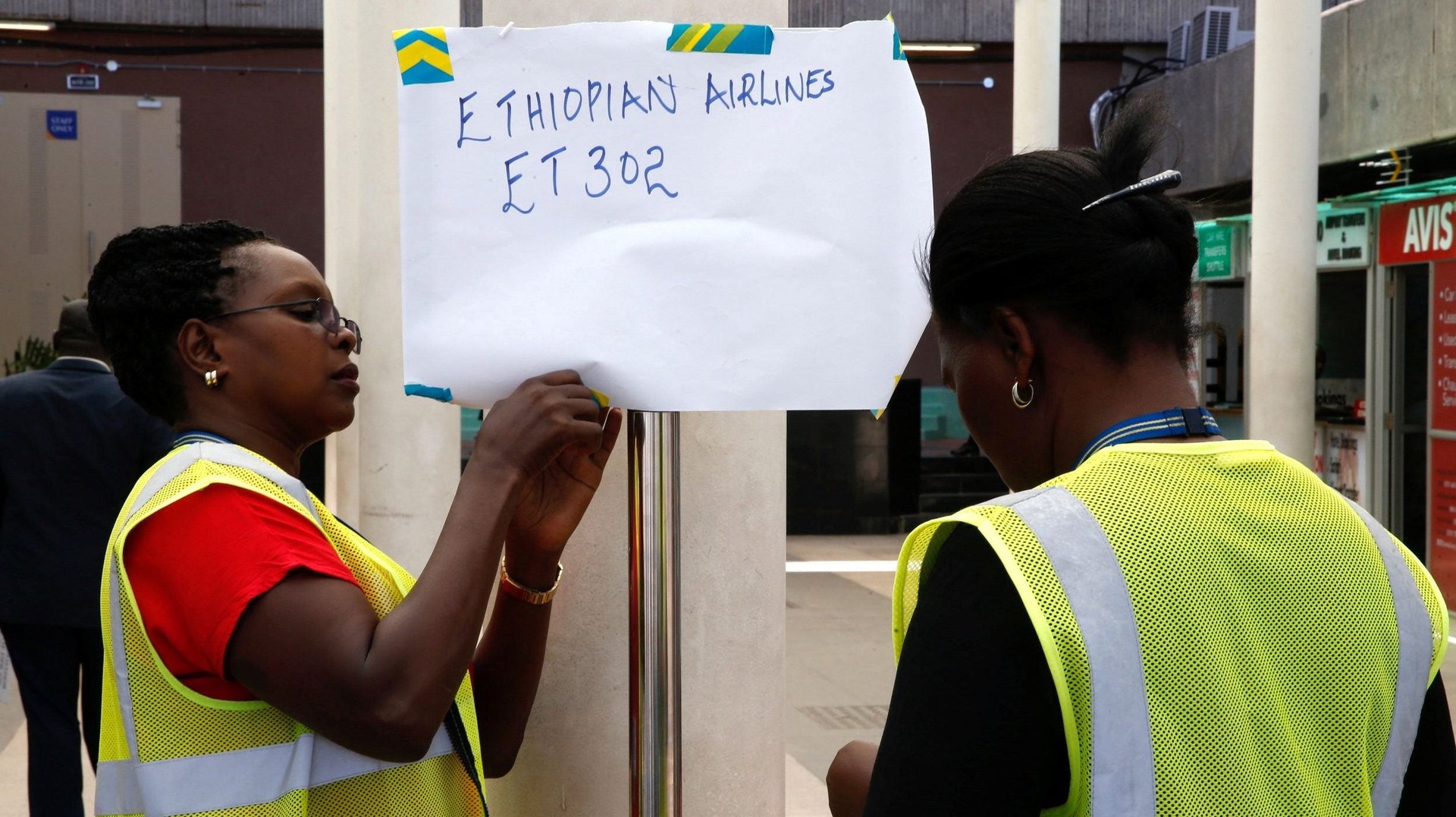For the second time in six months, a Boeing 737 Max has had a deadly crash
The crash of Ethiopian Airlines flight ET 302 on Sunday (March 10), which killed all 157 people on board, is the second deadly incident in less than six months involving Boeing’s 737 Max series, an aircraft seen as a game-changer for the short-haul industry.


The crash of Ethiopian Airlines flight ET 302 on Sunday (March 10), which killed all 157 people on board, is the second deadly incident in less than six months involving Boeing’s 737 Max series, an aircraft seen as a game-changer for the short-haul industry.
In October 2018, a Lion Air flight departing from Jakarta crashed 13 minutes after takeoff, killing all 189 on board. The crash investigation first looked at malfunctioning sensors on the aircraft, and then turned to the role of a new anti-stall mechanism in the 737 Max 8 and 9 series planes.
Soon after the Lion Air accident, the US Federal Aviation Authority issued an emergency directive ordering that flight manuals be updated with a procedure for how to stabilize an aircraft when the anti-stall mechanism, which responds to information from the plane’s “angle-of-attack” sensors, kicks in. The mechanism can sharply and suddenly point the plane’s nose downward. Boeing also directed airlines to a checklist to follow if the plane responds to erroneous angle-of-attack information.
The most recent crash occurred just minutes into a roughly two-hour flight from Bole International Airport in the Ethiopian capital of Addis Ababa to Nairobi, Kenya, after takeoff at 8:38 am local time. Investigators are examining wreckage around the town of Bishoftu, some 60 km (37 miles) southeast of Addis Ababa.
Ethiopian Group Airlines CEO Tewolde GebreMariam, who visited the crash site and expressed his deep regret over the accident, said at a press conference that the pilot of the flight had an excellent flying record and had requested to turn back before going off the radar. Boeing has said it is “deeply saddened” to hear of the deaths on ET 302 and is ready to support Ethiopian Airlines, and to offer technical assistance under the direction of the US National Transportation Safety Board.
Few additional details are yet available about what happened on ET302 after take-off. Flightradar24, a Sweden-based flight-tracking platform, has said that the aircraft’s vertical speed was unstable.
A preliminary report from Indonesia’s National Transportation Safety Committee in November did not assign responsibility for the Lion Air crash, but described the man-vs-machine battle that the pilot, an Indian national, and his co-pilot, an Indonesian national, faced against the flight system. The cockpit, without indicating an emergency, reportedly requested that the flight turn back to Jakarta but air-traffic controllers lost contact with the plane shortly thereafter. A more comprehensive report is expected in October or November this year.
Airline unions said after the Lion Air crash that pilots were not aware of the new anti-stall mechanism until that incident, and that they didn’t receive specific training for it. Boeing has said the steps required to stabilize the aircraft are part of pilot training. Pilots and safety experts have noted there are a number of steps to be followed, against the backdrop of a noisy anti-stall warning that rattles loudly. The anti-stall mechanism can begin functioning at a fairly low altitude, and can be set off by erroneous signals form a single sensor.
The Max 8 and 9 series planes began to be inducted into fleets two years ago. Boeing and regulators have been looking at the possibility of a software update to alter how the Max’s anti-stall mechanism works, but this has not happened yet (paywall).
Boeing is facing several lawsuits in the wake of the Lion Air crash, including one brought by the family of the Indonesian co-pilot, and another on behalf of families of 17 victims of that crash.
—Abdi Latif Dahir contributed to this article